Best PowerShell Tools to Buy in December 2025
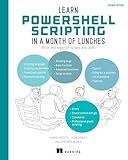
Learn PowerShell Scripting in a Month of Lunches, Second Edition: Write and organize scripts and tools


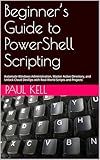
Beginner’s Guide to PowerShell Scripting: Automate Windows Administration, Master Active Directory, and Unlock Cloud DevOps with Real-World Scripts and Projects



PowerShell for Penetration Testing: Explore the capabilities of PowerShell for pentesters across multiple platforms



Hands-On Penetration Testing on Windows: Unleash Kali Linux, PowerShell, and Windows debugging tools for security testing and analysis


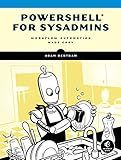
PowerShell for Sysadmins: Workflow Automation Made Easy


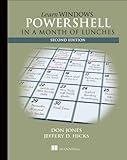
Learn Windows PowerShell in a Month of Lunches


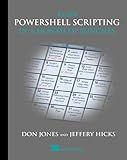
Learn PowerShell Scripting in a Month of Lunches



Learn Windows PowerShell in a Month of Lunches


In PowerShell, you can iterate over files using the Get-ChildItem cmdlet, which allows you to retrieve a list of files and directories in a specified location. You can then use a foreach loop to iterate over each file in the list and perform actions on each file, such as displaying information or processing the file in some way. Additionally, you can use filters or wildcards with Get-ChildItem to specify which files or directories you want to iterate over, such as only files with a specific extension or name pattern. Overall, iterating over files in PowerShell is a straightforward process that allows you to easily work with files and directories in your script or command line session.
How to filter files based on a specific criteria while iterating over them in PowerShell?
You can filter files based on specific criteria while iterating over them in PowerShell using the Get-ChildItem cmdlet along with the Where-Object cmdlet to apply the filtering criteria. Here is an example:
# Define the directory path where you want to iterate over the files $directoryPath = "C:\MyDirectory"
Get all files in the directory and filter based on a specific criteria (e.g. files with .txt extension)
Get-ChildItem -Path $directoryPath | Where-Object { $_.Extension -eq ".txt" } | ForEach-Object { # Do something with each file that meets the criteria Write-Host "File Name: $($_.Name)" }
In this example, the Get-ChildItem cmdlet is used to get all files in the specified directory. The Where-Object cmdlet is then used to filter the files based on a specific criteria, in this case, checking if the file extension is ".txt". Finally, the ForEach-Object cmdlet is used to iterate over each file that meets the filtering criteria and perform some action with each file.
How to iterate over files with a specific file extension in PowerShell?
You can iterate over files with a specific file extension in PowerShell using the Get-ChildItem cmdlet along with the -Filter parameter. Here is an example:
$files = Get-ChildItem -Path "C:\Path\To\Directory" -Filter "*.txt"
foreach ($file in $files) { Write-Host $file.FullName # Perform actions on file here }
In this example, we are using Get-ChildItem to get all files with a .txt extension in the specified directory. The -Filter parameter is used to filter the files based on their extension. Then, we use a foreach loop to iterate over each file and perform any necessary actions.
How to move files to a specific location while iterating over them in PowerShell?
To move files to a specific location while iterating over them in PowerShell, you can use a combination of the Get-ChildItem and Move-Item cmdlets. Here's an example script that demonstrates how to do this:
# Specify the source directory containing the files to move $sourceDirectory = "C:\Path\To\SourceDirectory"
Specify the destination directory where the files will be moved
$destinationDirectory = "C:\Path\To\DestinationDirectory"
Iterate over each file in the source directory
Get-ChildItem $sourceDirectory | ForEach-Object { # Move the file to the destination directory Move-Item $_.FullName -Destination $destinationDirectory }
In this script:
- Replace "C:\Path\To\SourceDirectory" with the path to the directory containing the files you want to move.
- Replace "C:\Path\To\DestinationDirectory" with the path to the directory where you want to move the files.
- The Get-ChildItem cmdlet retrieves a list of files in the source directory.
- The ForEach-Object cmdlet iterates over each file in the list.
- The Move-Item cmdlet moves each file to the destination directory.
How to archive files while iterating over them in PowerShell?
To archive files while iterating over them in PowerShell, you can use the following approach:
- Use the Get-ChildItem cmdlet to retrieve the list of files in a directory. You can use the -Recurse parameter to include files in subdirectories as well.
- Use a foreach loop to iterate over each file in the list.
- Use the Compress-Archive cmdlet to compress and archive each file. You can specify the destination path and archive format (e.g., zip) as parameters.
Here is an example script that demonstrates how to archive files while iterating over them in PowerShell:
$sourceDirectory = "C:\path\to\source\directory" $destinationArchive = "C:\path\to\destination\archive.zip"
Get-ChildItem $sourceDirectory -Recurse | ForEach-Object { $filePath = $_.FullName $archivePath = Join-Path $destinationArchive $_.Name
Write-Host "Archiving $filePath..."
Compress-Archive -Path $filePath -DestinationPath $archivePath
}
In this script, we are iterating over each file in the source directory and compressing it into an archive file in the destination directory. Make sure to adjust the paths and file formats as needed for your specific use case.
How to ignore hidden files while iterating over files in PowerShell?
You can use the Get-ChildItem cmdlet with the -File parameter to only retrieve files and then use the Where-Object cmdlet to filter out hidden files. Here's an example:
Get-ChildItem -File | Where-Object { -not $_.Attributes -band [System.IO.FileAttributes]::Hidden } | ForEach-Object { # Your code to process each file goes here }
This script will iterate over all files in the current directory and subdirectories, excluding any hidden files. You can add additional conditions to the Where-Object cmdlet if you need to further filter the files based on other criteria.
What is the recommended approach for handling errors when iterating over files in PowerShell?
The recommended approach for handling errors when iterating over files in PowerShell is to use a try-catch block within the loop that iterates over the files. This allows you to catch any errors that may occur during the iteration process and handle them appropriately.
Here is an example of how you can use a try-catch block to handle errors when iterating over files in PowerShell:
$files = Get-ChildItem -Path "C:\Path\To\Files"
foreach ($file in $files) { try { # Code to process the file Write-Output "Processing file: $($file.FullName)" } catch { Write-Error "Error processing file: $($file.FullName) - $($_.Exception.Message)" } }
In this example, the try block contains the code to process each file in the loop. If an error occurs during the processing of a file, the catch block will catch the error, log an error message, and continue processing the remaining files.
It is important to handle errors appropriately when iterating over files in PowerShell to ensure the smooth functioning of your script and prevent any unexpected behavior or issues.
